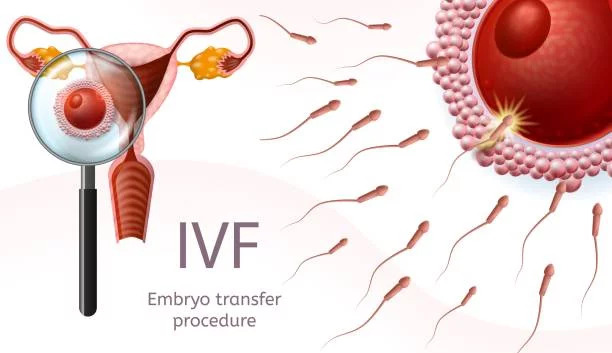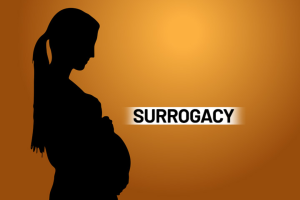What is IVF Full Form:
In vitro fertilization (IVF) is a complex series of procedures used to help people with fertility problems have children. During IVF, mature eggs are collected from a woman’s ovaries and fertilized by sperm in a lab. Then the fertilized egg (embryo) or eggs are implanted in the uterus. One cycle of IVF takes about two weeks. On average, it takes two to four cycles to achieve a successful pregnancy. However, success rates depend on many factors like maternal age.
Overview of the IVF Process
Here are the basic steps in an IVF cycle:
- Ovulation induction – The woman takes fertility medications to stimulate her ovaries to produce multiple eggs. This can take about 2 weeks.
- Egg retrieval – When the eggs are mature, they are retrieved through a minor surgical procedure. An ultrasound-guided needle is inserted through the vagina to remove the eggs from the ovaries. This takes about 30 minutes.
- Fertilization – The eggs are combined with sperm in a lab dish to allow fertilization. Frozen sperm or fresh sperm may be used.
- Embryo culture – The fertilized eggs (now embryos) are allowed to grow and develop for a few days in an incubator.
- Embryo transfer – One or more embryos are placed in the woman’s uterus through a thin tube inserted vaginally. This takes a few minutes and feels similar to a Pap smear. Any extra good-quality embryos can be frozen for potential future use.
- Pregnancy test – About two weeks after the embryo transfer, a blood test can determine if pregnancy was achieved. If successful, pregnancy continues as normal. If not successful, another cycle may be attempted.

Who Might Need IVF?
IVF can help people with a variety of fertility issues get pregnant, including:
- Fallopian tube damage or blockage makes it difficult for the egg to be fertilized
- Low sperm count, slow sperm movement, or abnormal sperm prevents fertilization
- Endometriosis has damaged the uterus or fallopian tubes
- A genetic disorder is likely to be passed on
- Unexplained infertility where no cause is found even after tests
- Fertility preservation for cancer patients about to undergo treatment
IVF may also be an option for single individuals and same-sex couples who wish to have a child through assisted reproductive technology.
Evaluating if You Need IVF
Your doctor will run tests to determine if IVF is the right fertility treatment for you. Common tests include:
- Blood tests to assess ovarian reserve and egg quality
- Hormone level tests to evaluate ovulation
- Imaging tests like a hysterosalpingogram (HSG) to examine the fallopian tubes
- Laparoscopy to inspect pelvic organs for abnormalities
- Semen analysis to assess sperm health
Your age is also a major factor, as fertility declines significantly in the mid-30s. Your doctor will consider your test results and age when advising if IVF is appropriate.
What is the IVF Success Rates?
Success rates for IVF depend on many factors:
- Age – Younger women have higher success rates. According to CDC data, for women under 35 using fresh embryos from their own eggs, the percentage of IVF cycles resulting in live birth is:
— 41-43% at age 34 and under
— 31-36% at ages 35-37
— 21-29% at ages 38-40
— 11-20% at ages 41-42
— 5% at age 43-44
- Reason for infertility – Problems with ovulation, fallopian tubes, endometriosis or sperm can lower IVF success.
- Embryo status – Using frozen embryos instead of fresh embryos lowers success rates slightly. But success is still possible with frozen embryos.
- Number of IVF cycles – The odds get better with each successive round using frozen embryos from a prior cycle.
- Lifestyle factors – Being overweight, smoking, or having certain medical conditions can reduce IVF success rates.
So IVF success depends greatly on your specific situation. Your doctor can give you a better idea of what results to expect.
The IVF Procedure Step-By-Step
Here is a look at what happens during each step of the IVF process:
1. Ovulation Induction
- The goal of ovulation induction is to stimulate the ovaries to develop multiple mature eggs for fertilization. This boosts the chances of successful fertilization.
- Fertility medications containing follicle stimulating hormone (FSH) or similar compounds are used to trigger the growth of ovarian follicles that contain the eggs.
- In a natural menstrual cycle only one follicle becomes mature, but with fertility drugs, multiple follicles mature.
- You will have regular ultrasounds to monitor follicle development and blood tests to check hormone levels.
- After about 8-14 days of medications, the eggs will be ready for retrieval.
- Timing of the egg retrieval procedure is important since the eggs must be harvested before ovulation occurs.
2. Egg Retrieval
- Egg retrieval is an outpatient surgical procedure done at a fertility clinic while you are awake but sedated.
- Right before the procedure, you will be given pain medication, antibiotics, and a medication to prevent premature ovulation.
- You’ll lie on your back with your feet in stirrups while an ultrasound probe is inserted vaginally to visualize the ovaries and follicles.
- A thin needle connected to the retrieval device is inserted through the vaginal wall into each follicle to remove the eggs from the ovaries.
- Fluid from the follicles is suctioned out and immediately examined in the lab to find the eggs.
- Mature eggs are kept in culture solution. Any immature eggs are discarded.
- The egg retrieval takes about 20-30 minutes. You’ll remain at the clinic resting for 1-2 hours before going home.
3. Fertilization
- In the lab, the eggs are prepared for the fertilization process.
- Freshly ejaculated sperm or thawed frozen sperm from your partner or a donor is mixed with the eggs.
- Conventional IVF or ICSI may be used to fertilize the eggs:
- In conventional IVF, sperm and eggs are placed together in culture dishes containing a nutrient-rich media and incubated overnight. This allows fertilization to occur naturally.
- With ICSI (intracytoplasmic sperm injection), a single live sperm is injected directly into each mature egg using specialized tools monitored under a microscope. ICSI is used when there are concerns about the sperm’s ability to penetrate the egg.
- Over 12 to 24 hours after fertilization, the eggs are examined to see if they began dividing into early embryos. Only mature eggs can be fertilized.
4. Embryo Culture
- Fertilized eggs now called embryos are incubated for 1-6 days while they divide and develop.
- Lab staff regularly check embryo growth, track cell division, and sometimes take photos.
- Testing may be done on some embryos to check for genetic disorders. This is called preimplantation genetic testing (PGT).
- After a few days, embryos that are higher quality and most likely to result in pregnancy are selected for transfer back into the woman’s uterus.
- Extra good quality embryos that are not transferred can be frozen (cryopreserved) using an advanced technique called vitrification. They may be thawed and used in future cycles.
5. Embryo Transfer
- This brief procedure transfers one or more embryos into the uterine cavity.
- First the cervix is cleansed. A thin tube (catheter) containing the embryo(s) in fluid is inserted through the cervix into the uterus using ultrasound guidance.
- The embryo(s) are deposited in the uterus and the catheter removed. You may feel mild cramping during the transfer.
- If successful implantation and pregnancy occur, the embryos will attach to the uterine lining and continue to develop.
- After the transfer you’ll rest for a short time at the clinic before going home.
6. Pregnancy Test
- Around two weeks after the embryo transfer, you will have a blood test to detect if pregnancy hormones are present.
- If the test is positive, pregnancy was achieved and hormones will continue to rise. Your doctor will monitor your pregnancy closely.
- With a negative test result, you’ll discuss options such as using frozen embryos or doing another fresh IVF cycle.
- Still, pregnancy could still happen later after a negative test if implantation occurred but hormone levels have not yet increased enough to detect. So your doctor may have you come back for retesting a week later.
Important Considerations for IVF Patients
Here are some key points to understand if you plan to pursue IVF:
- results vary greatly based on individual situations. Work closely with your doctor so you know what to expect.
- The process involves frequent appointments for ultrasounds, bloodwork, procedures, etc. so you must commit time.
- Injectable fertility medications have to be administered daily for weeks and have potential side effects.
- Meticulously following your medication schedule is vital for mature eggs retrieval.
- Egg retrieval and transfers are done as outpatient surgeries requiring anesthesia.
- You may produce too few or too many eggs, resulting in cycle cancellation or complications like OHSS.
- Fertilization may fail or embryos may stop developing putting the cycle at risk.
- Pregnancy may not occur even after successful retrieval and transfer. Additional cycles may be needed.
- You must prepare emotionally and financially for the stresses of potential IVF failure.
- If pregnancy occurs, early pregnancy risks and chances of multiples are increased with IVF.
So pursuing IVF means committing significant time, money, emotion, and physical effects during each cycle. Understanding this fully will help you make an informed choice.
What is the Cost of IVF
IVF is expensive averaging $12,000-$17,000 per cycle according to the Society for Assisted Reproductive Technology. Exact costs depend on:
- Your clinic
- Type of medications chosen
- Fresh or frozen embryos
- Number of embryo transfers done
- Insurance coverage if any
- Need for any additional procedures like genetic testing
Often medications are one of the highest out-of-pocket expenses for patients. Some ways to reduce IVF costs include:
- Ask if your clinic offers any financial deals like discounts for multiple IVF cycles or egg freezing
- Seek out fertility grants and financial aid organizations that help cover IVF costs
- Get the maximum possible insurance coverage for infertility treatment
- Use generic instead of brand-name medications when possible
- Request to reuse any leftover medications if doing another IVF cycle
- Look into donating unused embryos to another couple in exchange for lower fees
While quite expensive, for many people struggling with infertility the costs are well worth it. Budgeting carefully and utilizing financial assistance can help make IVF more affordable.
The IVF Protocol: Medications Used
The medications used in an IVF cycle serve two main purposes – controlling and regulating ovulation, and preparing the uterine lining for embryo implantation. Here are the main types:
Ovulation Induction Medications
- GnRH agonists – These drugs prevent premature ovulation. It suppresses luteinizing hormone (LH) levels.
- FSH injections – Human menopausal gonadotropins like Menopur or Follistim containing FSH stimulate follicle growth.
- hCG injection – Human chorionic gonadotropin triggers the final maturation and release of eggs from follicles. Brands include Novarel and Pregnyl
Luteal Phase Support Medications
- Progesterone – Supplementing progesterone, given as Prometrium capsules, Crinone gel or PIO injections helps prepare the uterine lining for implantation.
- Human chorionic gonadotropin – Low-dose hCG injections early in pregnancy can provide added luteal phase support.
Other IVF Drugs
- Antibiotics may be prescribed to reduce risk of infection after egg retrieval.
- Aspirin or heparin are sometimes given for thin uterine lining or clotting problems.
- Steroids like dexamethasone or prednisone may be used to help prevent severe ovarian hyperstimulation syndrome (OHSS).
- Oxytocin can help stimulate contractions during an embryo transfer to push the embryos into the uterus.
- Cabergoline may be prescribed following retrieval to help prevent OHSS.
- Antianxiety or antidepressant medications can help with the significant emotional stress.
While the medications involved in IVF are complex, they are carefully selected and timed for the best possible outcome. Work closely with your doctor to fully understand your unique protocol.
IVF Side Effects and Risks
Along with empowering people to build families, IVF treatment does involve notable side effects and risks to be aware of.
Short-term Side Effects
Some women experience temporary side effects from IVF medications like:
- Bloating, abdominal discomfort, and nausea
- Headaches and mood changes
- Hot flashes and night sweats
- Restlessness and fatigue
- Enlarged ovaries (mild OHSS)
Egg retrieval may cause:
- Mild bleeding or spotting
- Mild cramping and discomfort
- Infection or reaction to anesthesia drugs
Longer-term Risks
More serious risks associated with IVF include:
- Ovarian hyperstimulation syndrome (OHSS) – About 1-2% get severe OHSS with enlarged painful ovaries and fluid buildup. May require hospitalization.
- Multiple pregnancy – Around 20-30% of IVF pregnancies involves twins or more which increases pregnancy risks. Selectively transferring fewer embryos (like 1-2 instead of 3-4) helps reduce this risk.
- Ectopic pregnancy – Slightly higher risk of a pregnancy abnormally implanting outside the uterus.
- Miscarriage – IVF pregnancies have somewhat higher miscarriage rates.
- Premature delivery and low birth weight – More likely with twins/multiples.
Other Potential Risks
A few other concerns being researched include:
- Ovarian torsion – Ovaries can twist cutting off blood flow due to enlargement with fertility drugs. Surgery may be required to untwist.
- Ovarian cancer – Very recent research shows IVF drugs could raise long-term ovarian cancer risk. More studies are underway.
- Uterine cancer – Possible link to use of strong ovulation inducing drugs based on limited studies.
- Birth defects – Slightly higher rate seen with IVF pregnancies. Likely due to multiple factors.
Make sure you understand both the short-term side effects and more serious risks before pursuing IVF. Your doctor can help you weigh the benefits and potential dangers.
Improving IVF Success Rates With Lifestyle Changes
While outcomes depend heavily on age and medical factors, lifestyle habits also impact IVF success rates. Boost your odds with these changes:
Optimize Your Weight
- Being overweight or underweight reduces success rates. Have your BMI in the normal range of 20-25.
- Losing excess weight improves egg quality if you have issues with obesity.
Quit Unhealthy Habits
- Stop smoking and minimize alcohol since both impair fertility and pregnancy outcomes.
- Avoid illicit drug use which may interfere with fertility treatments.
Reduce Stress
- Anxiety and emotional stress can hinder fertility and pregnancy.
- Try mind-body techniques like acupuncture, yoga, and meditation. Seek counseling if needed.
Improve Your Diet
- Eat plenty of antioxidants from fruits, vegetables, nuts and whole grains to help egg and sperm quality.
- Get enough protein, healthy fats, iron, calcium and vitamin D.
- Avoid excess sugar, refined carbs and unhealthy trans fats.
Limit Strenuous Activity
- Avoid overexercising during IVF treatment cycles, but light and moderate activity is fine.
- Take care to avoid any contact sports or activities with risk of ovarian trauma.
Making positive lifestyle changes gives you a sense of control and optimizes the aspects you can modify when pursuing IVF.
Increasing IVF Success With Assisted Hatching
Assisted hatching is a procedure sometimes used during IVF to help an embryo successfully attach to the uterine lining after transfer. Here’s how it can improve success rates:
What is Assisted Hatching?
- After in vitro fertilization, embryos develop an outer shell called the zona pellucida.
- Normally the embryo “hatches” through this shell just before implantation into the uterine lining.
- With assisted hatching, a tiny hole is made in the shell using lasers or acid solutions prior to transfer into the uterus.
Why Assisted Hatching Helps
- Creating an opening may promote better hatching so the embryo can fully get out of the shell and implant properly.
- It can increase pregnancy rates in certain situations:
- Advanced maternal age (over 38) since eggs have thicker shells
- Repeated failed IVF cycles
- Poor embryo quality
- Thickened or hardened zona pellucida
- Frozen embryos – freezing toughens the shell
The Procedure
- It is done right before transfer when the embryo is checked under the microscope.
- A laser or acid solution (Tyrode’s) creates a tiny opening in the shell without harming the embryo.
- Studies find the expanded hole created by laser may work better than acid techniques.
- After assisted hatching, the embryo transfer into the uterus proceeds as normal.
When recommended by your doctor, assisted hatching offers another approach to enhance IVF success rates in challenging situations.
IVF Using Donor Eggs and Donor Sperm
Donor Eggs
Donor eggs from young healthy women can enable successful pregnancy in situations like
After How Many Weeks IVF Pregnancy is Safe:
Here’s an overview of when an IVF pregnancy is generally considered safe:
- 4 weeks – A positive pregnancy test indicates the embryo has implanted and pregnancy hormones are being produced. However, the risk of miscarriage is still relatively high at this point.
- 6 weeks – Cardiac activity can first be detected on ultrasound around 6 weeks, which is an assuring milestone. The miscarriage risk drops significantly once a heartbeat is seen.
- 10-12 weeks – The risk of miscarriage continues to decline after 10 weeks. At this point, the embryo has developed into a fetus and critical organ development is underway. The pregnancy is likely viable if it makes it to this stage.
- 13 weeks – The end of the first trimester marks a major milestone. At this point, the risk of miscarriage drops to around 2%. Most genetic screening tests are done at this stage.
- 20 weeks – At the halfway point, you’ve made it to the second trimester. Risk of loss drops to less than 1%. An anatomy scan around 18-22 weeks allows detection of any fetal abnormalities.
- 24 weeks – Vital fetal development is complete around 24 weeks. Premature delivery at this point has a high chance of infant survival with intensive neonatal care.
- 28 weeks – Reaching the third trimester means the pregnancy has a very high chance of continuing successfully to full term delivery. Babies born prematurely after this point have a good outlook with proper care.
So while each week of progress reduces risks, an IVF pregnancy is generally considered viable and safe once you have made it past the 12-13 week mark when the miscarriage likelihood declines significantly. However, it’s best to continue monitoring closely with your doctor throughout.



